-
 Bitcoin
Bitcoin $120400
1.77% -
 Ethereum
Ethereum $3615
7.90% -
 XRP
XRP $3.580
17.84% -
 Tether USDt
Tether USDt $1.001
0.06% -
 BNB
BNB $729.4
1.25% -
 Solana
Solana $179.9
5.04% -
 USDC
USDC $0.0000
0.01% -
 Dogecoin
Dogecoin $0.2311
8.22% -
 TRON
TRON $0.3226
4.04% -
 Cardano
Cardano $0.8490
12.85% -
 Hyperliquid
Hyperliquid $46.45
0.72% -
 Stellar
Stellar $0.4913
8.54% -
 Sui
Sui $4.027
2.00% -
 Chainlink
Chainlink $18.51
11.67% -
 Hedera
Hedera $0.2818
21.51% -
 Avalanche
Avalanche $24.03
7.40% -
 Bitcoin Cash
Bitcoin Cash $508.5
2.90% -
 Shiba Inu
Shiba Inu $0.00001496
3.24% -
 UNUS SED LEO
UNUS SED LEO $8.961
1.83% -
 Toncoin
Toncoin $3.264
3.13% -
 Litecoin
Litecoin $104.6
8.15% -
 Polkadot
Polkadot $4.389
6.11% -
 Uniswap
Uniswap $9.924
10.63% -
 Monero
Monero $337.9
0.49% -
 Pepe
Pepe $0.00001376
2.79% -
 Bitget Token
Bitget Token $4.830
2.46% -
 Ethena USDe
Ethena USDe $1.001
0.05% -
 Dai
Dai $1.000
0.02% -
 Aave
Aave $325.2
1.66% -
 Bittensor
Bittensor $423.7
-0.85%
How to verify the authenticity of a physical item linked to an NFT?
NFTs linked to physical items use blockchain and unique identifiers like QR codes or NFC chips to verify authenticity and ensure ownership matches the tangible product.
Jul 18, 2025 at 03:07 pm
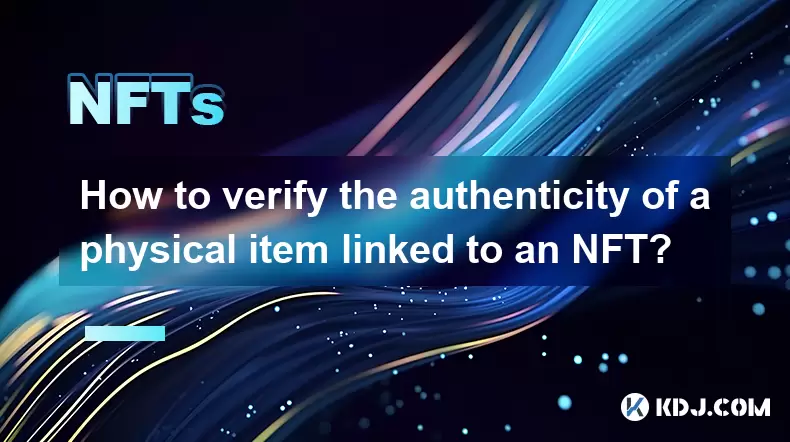
Understanding the Link Between NFTs and Physical Items
When an NFT is linked to a physical item, it essentially acts as a digital certificate of ownership stored on the blockchain. The authenticity verification process requires understanding how this digital token corresponds with the tangible object in question. This connection is typically established through unique identifiers such as QR codes, NFC chips, or serial numbers embedded into the physical item.
Verifying authenticity involves checking whether the digital token on the blockchain matches the information associated with the physical object. This ensures that the item is not counterfeit and that the NFT owner has legitimate rights over the physical counterpart.
Step-by-Step Verification Using Blockchain Explorers
To verify the authenticity of a physical item linked to an NFT, one must begin by accessing the blockchain explorer corresponding to the network where the NFT was minted (e.g., Ethereum, Binance Smart Chain, Solana). Each NFT has a unique contract address and token ID, which can be cross-referenced with the details provided by the issuer or seller.
- Open the relevant blockchain explorer for the NFT’s network
- Enter the contract address of the NFT collection
- Search for the specific token ID associated with the physical item
- Verify that the metadata and attributes match the claimed item
The metadata often includes links to external data, including images, descriptions, and sometimes even embedded codes tied to the physical product.
Checking Embedded Identifiers on the Physical Item
Physical items linked to NFTs often contain embedded identifiers like QR codes, NFC tags, or holographic stickers. These serve as bridges between the physical and digital worlds. Scanning or tapping these identifiers should lead directly to the NFT’s blockchain record or a secure verification portal.
For instance, scanning a QR code might redirect to a website where users can input the token ID or wallet address to confirm alignment with the physical item. NFC-enabled devices can tap the tag to automatically retrieve the NFT’s blockchain address and verify ownership instantly.
Using Smart Contracts for Ownership Validation
Smart contracts are self-executing agreements with the terms written directly into lines of code. They play a crucial role in verifying the legitimacy of NFT-linked physical items. By interacting with the smart contract on platforms like Etherscan or BscScan, users can query functions such as ownerOf(tokenId) to see who currently owns the NFT.
This step ensures that the individual claiming ownership of the physical item also holds the corresponding NFT wallet address. If there's a mismatch, it could indicate fraud or unauthorized duplication of the item or NFT.
Leveraging Third-party Verification Platforms
Several third-party platforms specialize in authenticating NFT-backed physical assets. Services like Verisart, Async Art, or Tokenproof offer tools that allow users to cross-check the NFT against verified databases or provide additional layers of authentication.
These platforms often integrate with major marketplaces like OpenSea or Rarible and may require uploading proof of ownership or scanning a unique identifier from the physical item. Once processed, they return a confirmation indicating whether the NFT and item are legitimately paired.
Frequently Asked Questions
What if the NFT and physical item don’t match after verification?
If the NFT does not correspond with the physical item’s identifiers, it suggests a possible forgery or misrepresentation. In such cases, contacting the platform’s support team or the issuing brand is advisable to report the discrepancy and seek resolution.
Can I verify an NFT-linked item without technical expertise?
Yes, many platforms simplify the verification process using user-friendly interfaces. For example, scanning a QR code with a smartphone camera or tapping an NFC tag with an Android device can trigger automatic verification without requiring deep blockchain knowledge.
Is it possible for multiple NFTs to claim ownership of the same physical item?
In theory, each physical item should have a unique identifier linked to one NFT only. However, if multiple NFTs claim the same item, it indicates either a duplication attempt or a flaw in the linking system. Always verify through official channels and check the blockchain records for duplicate token IDs.
How secure is the NFT-to-physical item verification process?
The security level depends on the technology used for the link. Blockchain-based verification offers high security due to immutable records. However, the weakest link is often the physical identifier itself—such as a QR code that could be replicated. Brands increasingly use tamper-proof labels or encrypted NFC chips to enhance protection.
Disclaimer:info@kdj.com
The information provided is not trading advice. kdj.com does not assume any responsibility for any investments made based on the information provided in this article. Cryptocurrencies are highly volatile and it is highly recommended that you invest with caution after thorough research!
If you believe that the content used on this website infringes your copyright, please contact us immediately (info@kdj.com) and we will delete it promptly.
- Giants Protocol's G Token Live Launch: What You Need to Know
- 2025-07-18 21:30:13
- Solana, Rollblock, and the Gaming Token Revolution: What's Hot Now?
- 2025-07-18 22:10:13
- Crypto 2025: Will the Bull Run Be Led by Ethereum?
- 2025-07-18 22:10:13
- XRP, Dogecoin, and Crypto Bills: What's Shaking in the Crypto World?
- 2025-07-18 20:50:13
- Trump, Family Business, and Power: A New Era of Conflicts?
- 2025-07-18 20:30:12
- Trump, Business, & Bitcoin: A Crypto Capitalist's Vision
- 2025-07-18 20:40:12
Related knowledge
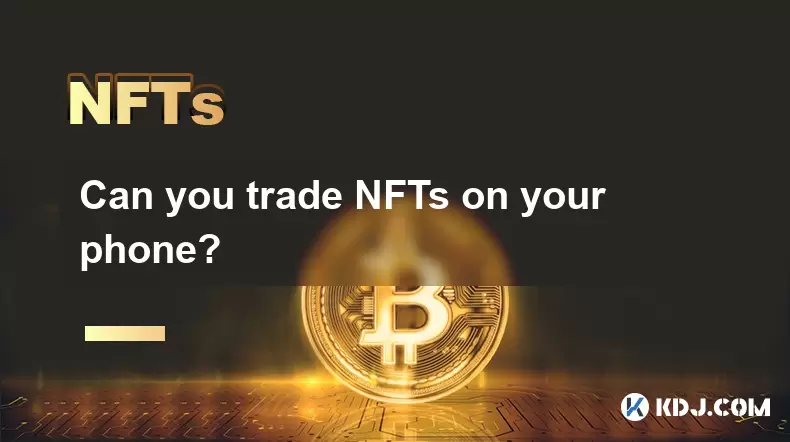
Can you trade NFTs on your phone?
Jul 18,2025 at 04:29am
Trading NFTs on Mobile DevicesYes, you can trade NFTs on your phone, and the process has become increasingly streamlined thanks to a variety of mobile...
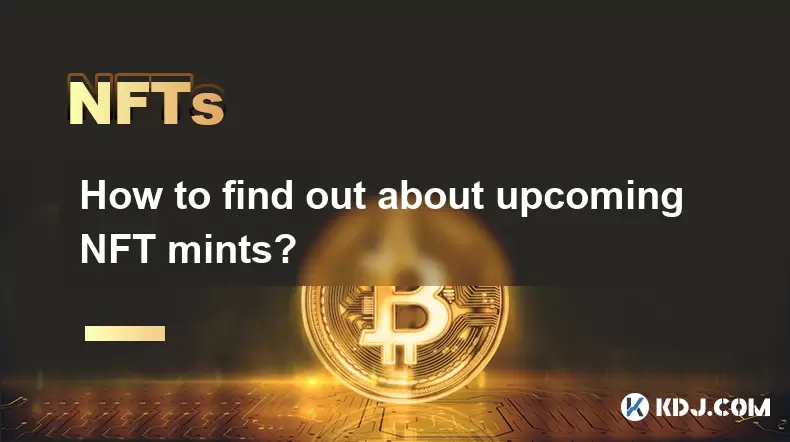
How to find out about upcoming NFT mints?
Jul 18,2025 at 11:50am
Exploring NFT Minting OpportunitiesUnderstanding the landscape of upcoming NFT mints is crucial for collectors, investors, and creators who wish to st...
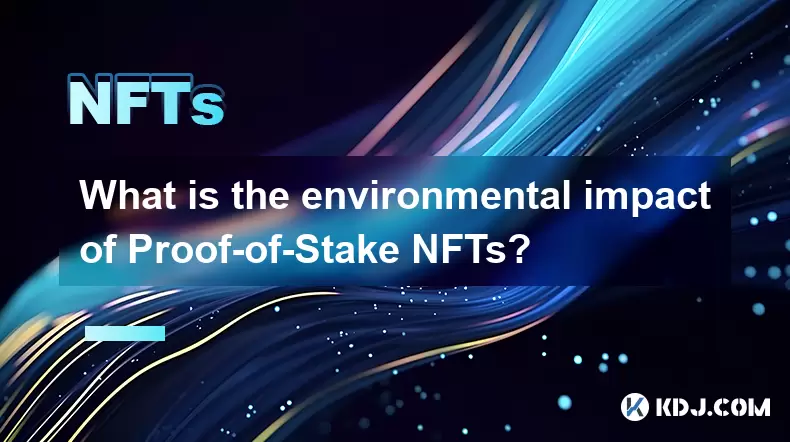
What is the environmental impact of Proof-of-Stake NFTs?
Jul 17,2025 at 07:14pm
Understanding the Basics of Proof-of-Stake NFTsProof-of-Stake (PoS) is a consensus mechanism used by blockchain networks to validate transactions and ...

How to verify the authenticity of a physical item linked to an NFT?
Jul 18,2025 at 03:07pm
Understanding the Link Between NFTs and Physical ItemsWhen an NFT is linked to a physical item, it essentially acts as a digital certificate of owners...
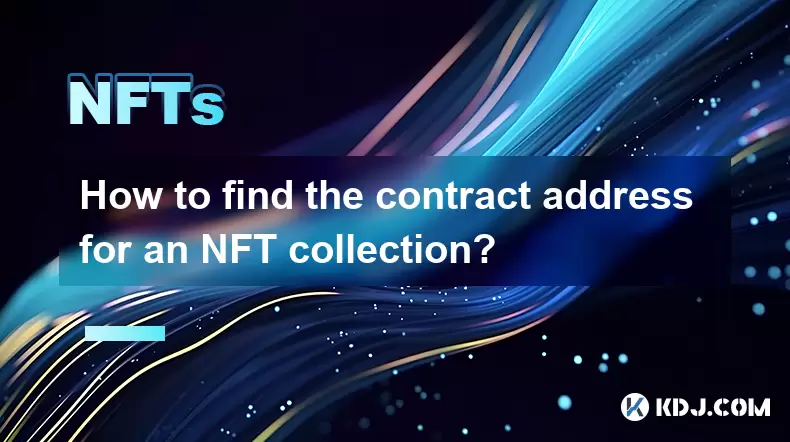
How to find the contract address for an NFT collection?
Jul 18,2025 at 11:56am
Understanding What a Contract Address IsIn the world of non-fungible tokens (NFTs), a contract address is a unique identifier assigned to a smart cont...
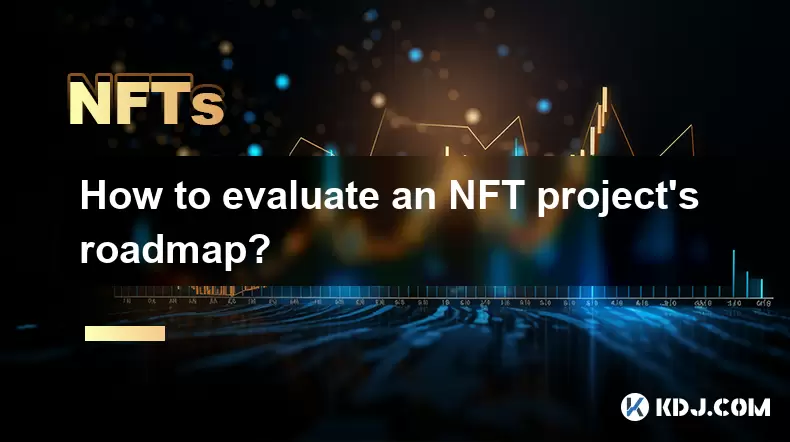
How to evaluate an NFT project's roadmap?
Jul 18,2025 at 01:21am
Understanding the Basics of an NFT Project RoadmapAn NFT project's roadmap is a strategic document that outlines the short-term and long-term goals of...

Can you trade NFTs on your phone?
Jul 18,2025 at 04:29am
Trading NFTs on Mobile DevicesYes, you can trade NFTs on your phone, and the process has become increasingly streamlined thanks to a variety of mobile...

How to find out about upcoming NFT mints?
Jul 18,2025 at 11:50am
Exploring NFT Minting OpportunitiesUnderstanding the landscape of upcoming NFT mints is crucial for collectors, investors, and creators who wish to st...

What is the environmental impact of Proof-of-Stake NFTs?
Jul 17,2025 at 07:14pm
Understanding the Basics of Proof-of-Stake NFTsProof-of-Stake (PoS) is a consensus mechanism used by blockchain networks to validate transactions and ...

How to verify the authenticity of a physical item linked to an NFT?
Jul 18,2025 at 03:07pm
Understanding the Link Between NFTs and Physical ItemsWhen an NFT is linked to a physical item, it essentially acts as a digital certificate of owners...

How to find the contract address for an NFT collection?
Jul 18,2025 at 11:56am
Understanding What a Contract Address IsIn the world of non-fungible tokens (NFTs), a contract address is a unique identifier assigned to a smart cont...

How to evaluate an NFT project's roadmap?
Jul 18,2025 at 01:21am
Understanding the Basics of an NFT Project RoadmapAn NFT project's roadmap is a strategic document that outlines the short-term and long-term goals of...
See all articles

























































































